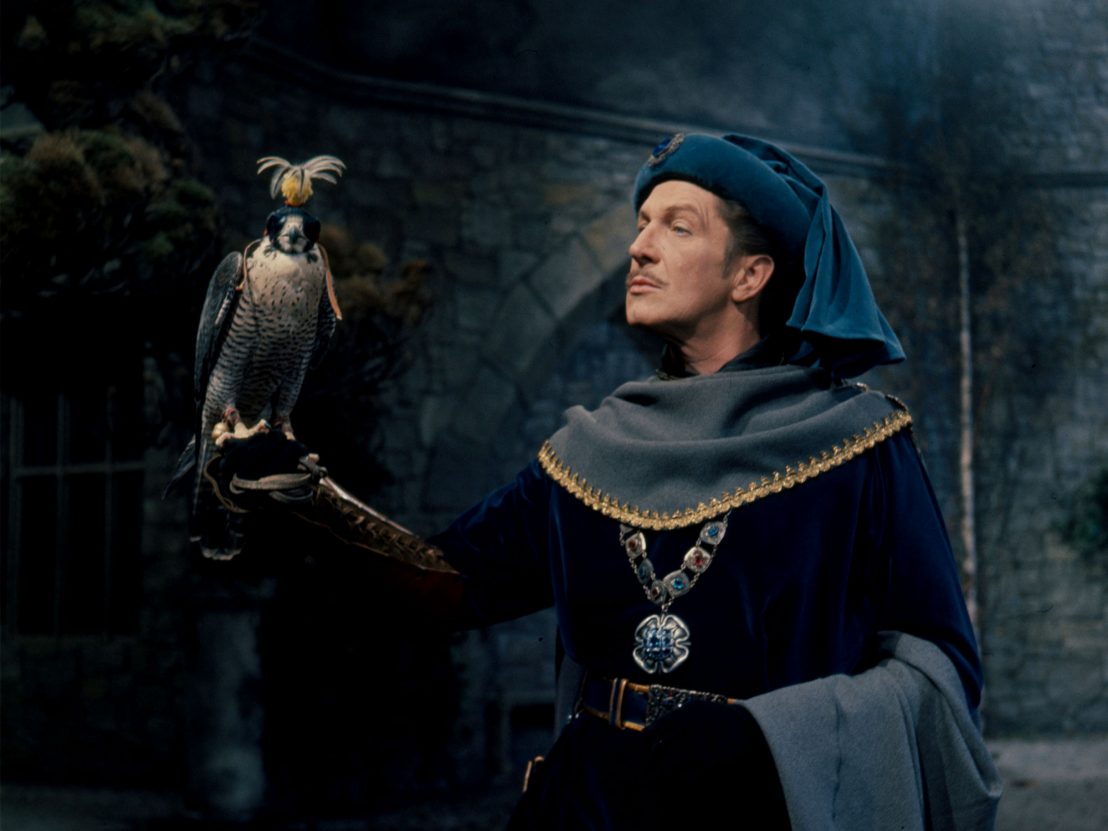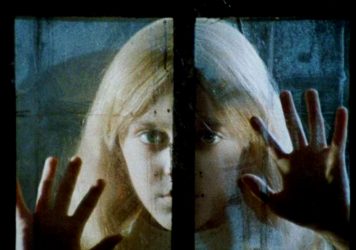
The Masque of the Red Death is the seventh of eight features which Roger Corman adapted in the first half of the 1960s from the writings of Edgar Allan Poe. Some of these adaptations were very loose: The Haunted Palace, for example, made one year prior, merely took its title from an 1839 poem by Poe, while borrowing its actual story from a different author and text entirely, HP Lovecraft’s 1927 novella ‘The Case of Charles Dexter Ward’.
First published in 1842, Poe’s ‘The Masque of the Red Death’ tells of Prince Prospero holed up for months with the local nobility in his luxuriously appointed abbey to avoid the deadly plague outside, only for death’s empty embodiment to gatecrash the masked ball and fatally to infect all the revellers. It’s an evocative and impressionistic story, but it is also very short. And while Corman’s film of the same name certainly retains the bare bones of its source, it also fleshes these out with all manner of other influences.
As written by Charles Beaumont and R Wright Campbell, and played with inimitable decadence by Vincent Price, Corman’s Prospero is not merely the leader of an exclusive elite but also a Satan-worshipping sadist hellbent on torturing the captives he keeps in his dungeons and corrupting the innocent – like the wide-eyed, God-fearing Francesca (Jane Asher) – so that his castle comes to resemble not only the pleasure palace from Poe (with its suite of colour-coded rooms) but also the infernal château from the Marquis de Sade’s notorious 1785 novel ‘The 120 Days of Sodom’.
Here Prospero has an invented consort, Juliana (Hazel Court), whose desire to become a handmaiden to the Devil allows Corman to create a lysergically-lit dream sequence in which she is visited in bed by a succession of ‘exotic’ men brandishing phallic blades. One sequence, in which Francesca, her father Lodovico (Nigel Green) and her fiancé Gino (David Weston) are tricked into thinking they have escaped the castle, is lifted from Auguste Villiers de l’Isle-Adam’s 1883 short story ‘A Torture By Hope’, while another subplot involving the dwarf jester Hop-Toad (Skip Martin), who wreaks a horrific revenge for the mistreatment of his lover Esmeralda (Verina Greenlaw) by the nobleman Alfredo (Patrick Magee), is taken straight out of Poe’s own 1849 short story ‘Hop-Frog’.
All these different storylines are deftly interwoven to show the greed and privilege of a landed gentry that imagines itself immune to the deprivations and death affecting the peasantry below and beyond the castle walls – although the wilfully wicked Prospero does not mind extending his murderous cruelties to his fellow nobles and even to his own consort, making him as indiscriminate in his depravity as the Red Death is in his destruction.
The Red Death himself (an uncredited John Westbrook) is no mere apocalyptic phantom appearing only at the end, but a speaking – if mysterious – character right from the opening scene, who seems, with his philosophical talk, game playing and ultimate leading of a danse macabre, to have been modelled less on Poe’s baleful apparition than on the personification of Death in Ingmar Bergman’s The Seventh Seal.
There is, though, one major difference: as his very name implies, the Red Death is presented in full colour, and is covered from head to toe in the same bloody crimson that marks the victims of his plague. This makes him stand out not only from Bergman’s monochrome vision but also in the Prince’s otherwise multi-hued castle from which the colour scarlet – along with the similarly named nobleman Scarlatti (Paul Whitsun-Jones) – has been expressly and forcefully proscribed.
Indeed, one of the great thrills of The Masque of the Red Death is the brilliant, Bava-esque colour on display, lovingly shot by then cinematographer Nicolas Roeg and here restored to their full Technicolor lustre by the Academy of Motion Picture Arts & Sciences Film Archive and the Film Foundation. In the end, this is a gothic tale of two vying dominions, one ruled by an effete, debauched man whose perverse pleasures are entirely earthbound, the other unworldly, undeniable, undefiable – or in a word (quoted directly from Poe’s text) ‘illimitable’.
Any viewer who wishes to find moral meaning in the sparing of Francesca from (and by) Death must overlook the fact that she is not only tempted by Prospero to abandon her Christian faith and come over to the Devil’s side, but also ultimately appears to succumb to that temptation. Yet nearly everyone else – literally hundreds of thousands of people, many no doubt less ambiguously pious, and coming from more than mere Christian cultures – does not survive.
This is a celebration not of death’s righteousness and mercy, but of its inexorable arbitrariness, operating beyond the colourful dramas of good and evil that the Prince stages within the more or less controlled confines of his palace. Death may on occasion wear the Prince’s face, even as the Prince sometimes does Death’s work for him – but the Red Death comes in many masks, even in many colours, and always finds a way to ruin the party, no matter the class or creed, age or ability, pedigree or provenance of those attending.
In these days of lethal pandemic, The Masque of the Red Death comes with a particular resonance, but really there can be no time when this memento mori lacks its polychromatic punch.
The Masque of the Red Death is available on Blu-ray, DVD and digital in an extended cut, restored in 4K by Martin Scorsese’s Film Foundation and The Academy, from StudioCanal on 25 January.
Published 24 Jan 2021

By Anton Bitel
Kill, Baby... Kill! contains one of cinema’s earliest evil children.

The self-styled ‘Pope of Pop Cinema’ talks about his amazing life as an on-the-lam moviemaker.

By Adam Scovell
Visiting Guilford Cathedral, the grand, eerie centrepiece of Richard Donner’s horror classic.